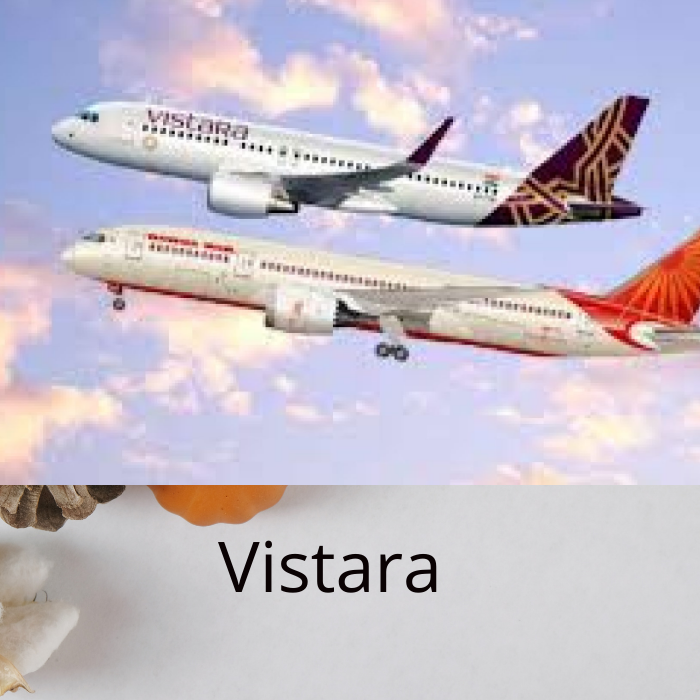Vistara
This Monday will be Vistara’s last flight as a full-service airline after nine years of operation. The airline, which is a joint venture between Singapore Airlines and Tata Sons, will combine with Air India, which is owned by Tata, to form a single organization with a larger fleet and network.
This implies that Air India will now be in charge of all Vistara operations, including help desks and ticketing offices. Vistara has been moving its current reservations and loyalty plans to Air India for months. In answer to a question, an Air India representative stated that cuisine, serviceware, and other components are being improved as part of the merger to combine the best features of Vistara and Air India.
Tata has promised passengers that Vistara’s in-flight experience will not be affected, despite some people voicing worries about possible drops in service quality. With a reputation for excellent cuisine, service, and cabin standards, Vistara has built a devoted following. Fans, branding specialists, and aviation professionals have all criticized the Vistara brand’s choice to retire.
According to aviation analyst Mark Martin, Air India effectively “had to absorb a loss-making airline out of necessity,” and the merger was methodically carried out to balance Vistara’s books and offset its losses. He clarified that the goal of the merger is to fortify the airlines rather than necessarily eradicate or conceal losses.
In fact, over the past year, Vistara and Air India both showed gains in other operational measures and a more than 50% reduction in yearly losses. The merger process has been turbulent, nevertheless. Vistara crew members have taken collective sick leave in protest to alignment with Air India’s wage system, and problems have ranged from pilot shortages to widespread flight cancellations. Viral videos displaying damaged seats and defective in-flight entertainment systems are among the complaints that have been made about Air India’s service standards.

There is now a void in India’s sky for full-service, premium airlines due to Vistara’s closure. In response, Tata has ordered hundreds of new Airbus and Boeing aircraft to expand its fleet and has launched a $400 million effort to upgrade the cabins of its older aircraft. Martin, however, characterized the “transformation” as unfinished and difficult, with the merger making matters more complicated.
The merger is uneven, according to branding experts. Brand strategist Harish Bijoor revealed that he was “emotional” over the closure of a high-end product like Vistara, which established a “gold standard in Indian aviation.” Bijoor described it as a major setback for the business, pointing out that since a much smaller airline is now being combined into a much larger one, Air India will have difficulty meeting Vistara’s high standards.
Operating Air India and Vistara as separate brands for five years, with an emphasis on raising Air India’s service standards while keeping Vistara as a unique brand, would have been a better course of action, according to Bijoor. According to him, “Air India would have had the time and chance to enhance the parent brand, bringing it up to Vistara’s level while maintaining its distinct identity.”

The combined company will have numerous operational difficulties in addition to branding issues. “In the early days, communication will be a major challenge as customers arrive expecting Vistara flights, but will only see Air India branding,” said Ajay Awtaney, editor of the aviation web Live from a Lounge. For weeks, it would be crucial that Air India communicates clearly, he continued.
Cultural integration is another major obstacle: Vistara’s nimble staff would find it difficult to adapt to Air India’s more extensive procedures and bureaucracy.
Offering passengers a consistent flying experience will be the combined airline’s largest obstacle, though.
“These two airlines are merging into one, yet their service approaches are radically different. Different service types, cabin designs, branding, and customer experiences will all be combined in this merger. Both learning and unlearning will be required, which is a procedure that rarely works well with airlines, Mr. Martin stated.
Still, a lot of people think Vistara’s departure was unavoidable, if not now, then in the coming years.
With its strong worldwide identity and undeniable association with “India,” a historical brand like Air India wouldn’t let a smaller, more upscale subsidiary overwhelm its efforts at rebirth.
It didn’t make financial sense for Tata to have two losing businesses in direct competition with one another.
Additionally, Tata is better positioned to compete with Indigo, the market leader, thanks to the combined strength of Vistara and Air India.
According to an Air India spokeswoman, the combined Air India group—which now includes Air India Express after merging with the former AirAsia India in October—will be “bigger and better, with a fleet of nearly 300 aircraft, an expanded network, and a strong workforce.”
“Air India will change overnight after the merger is finalized, and both teams will begin working together rather than against each other. A merger can never be done at the ideal moment. “At some point, a boundary has to be set,” remarked Mr. Awtaney.
However, for many of Vistara’s devoted passengers, the airline’s collapse creates a space in the Indian aviation market for a high-end, full-service airline, which was left empty by the loss of Jet Airways and Kingfisher Airlines.
It remains to be seen if Air India, which frequently receives worse ratings in airline surveys, can effectively close that gap.
